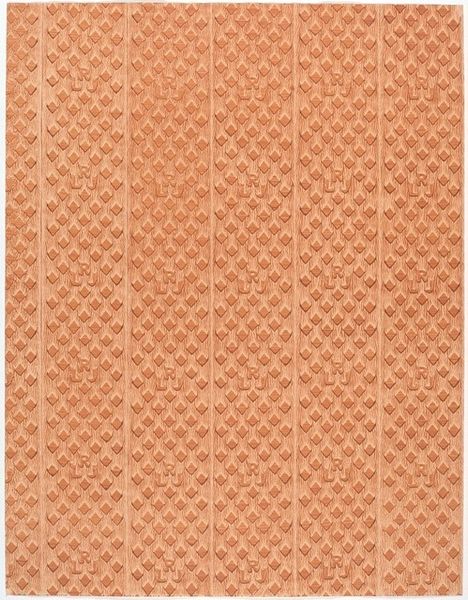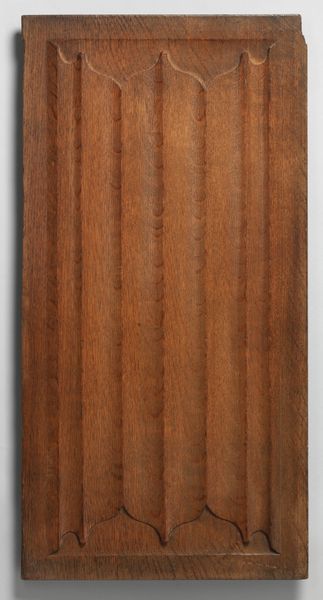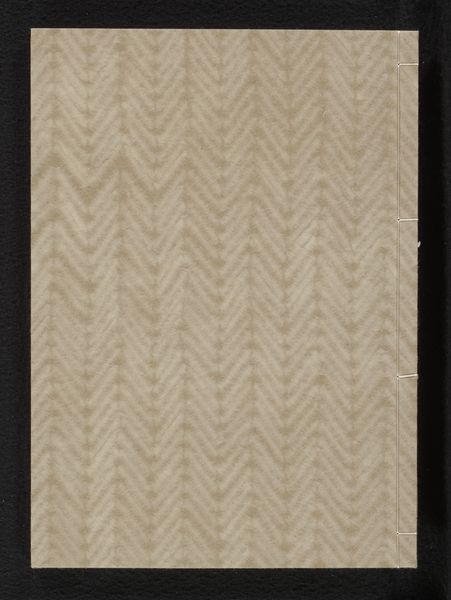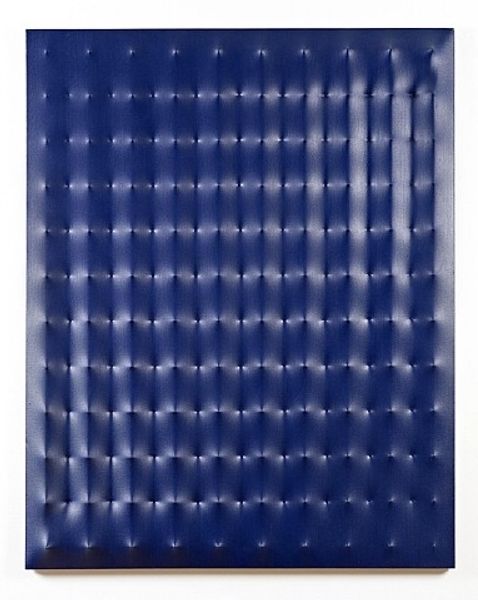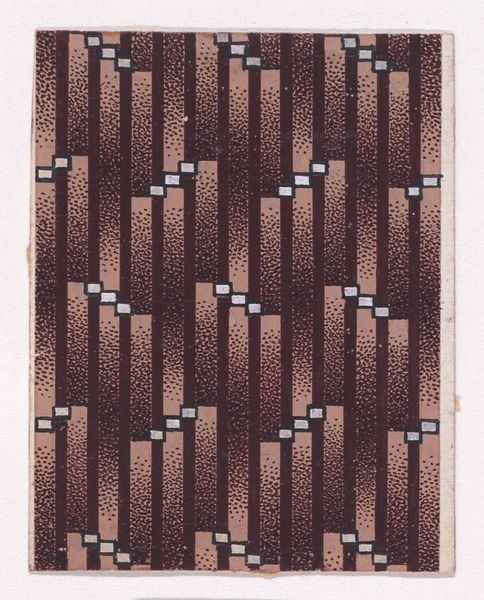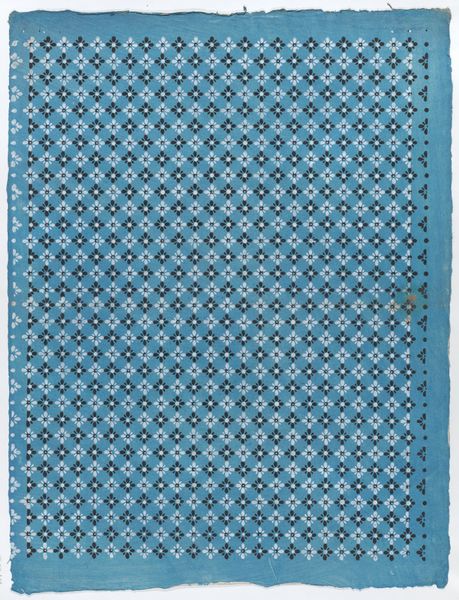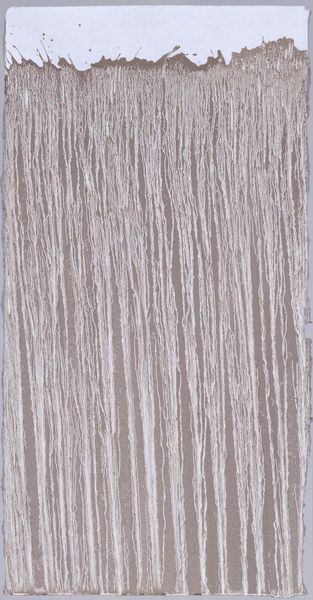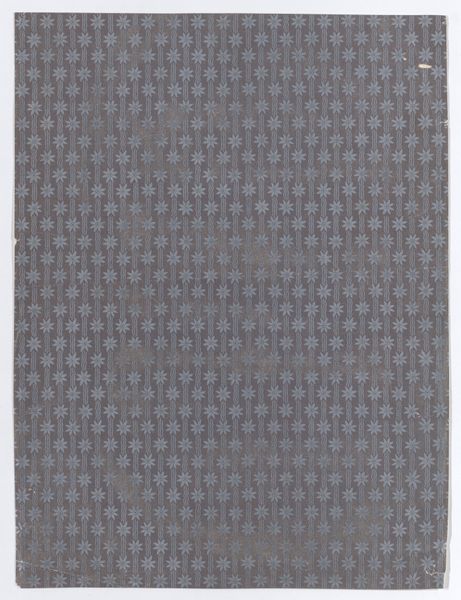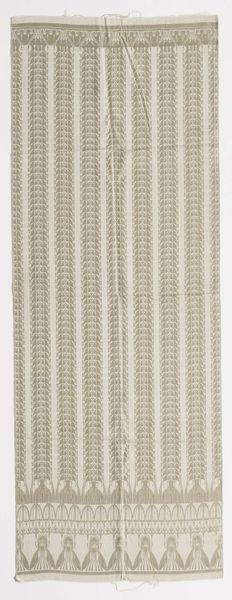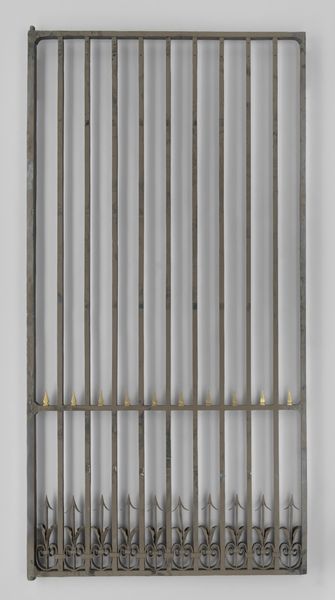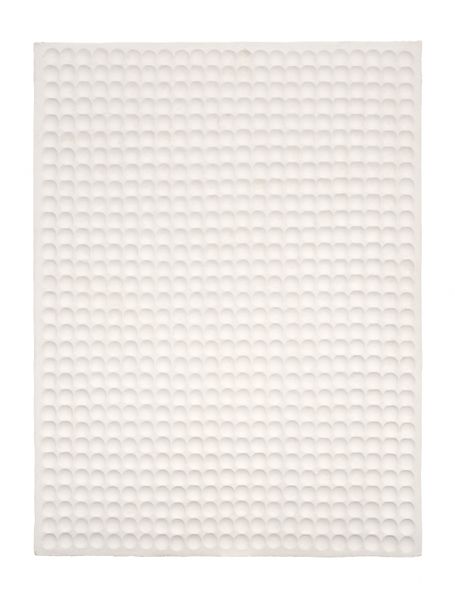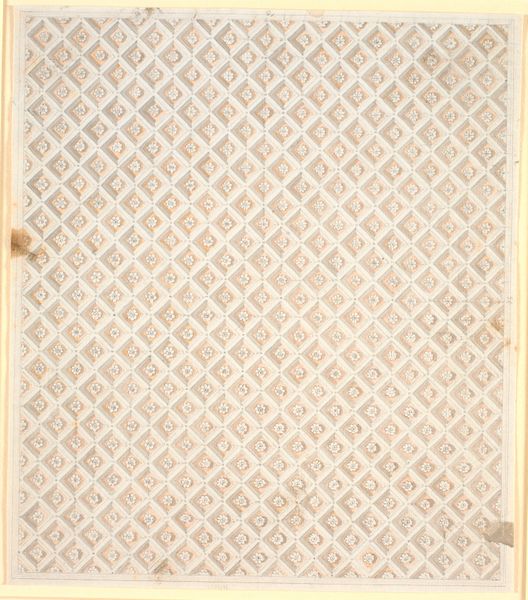
sculpture, wood
#
form
#
geometric pattern
#
geometric
#
art-informel
#
sculpture
#
matter-painting
#
abstraction
#
wood
Copyright: Jean Degottex,Fair Use
Curator: At first glance, this piece strikes me as simultaneously calming and unsettling, like the ordered chaos of a Zen garden after a storm. Editor: That's an interesting reading. We're looking at Jean Degottex's "Débris (XXII)". Though its precise date remains unconfirmed, we know this artwork to be wood sculpture, a captivating example of Art Informel or Matter Painting. What do you see here in terms of symbols or deeper meanings? Curator: The slanting lines immediately evoke a sense of disruption to an otherwise ordered pattern. Think of it as language deconstructed or an ideology fractured. What do we make of these diagonal "scars?" Are these visual cues for acts of destruction or cathartic liberation from constraint? Editor: In considering how such forms of materiality take hold through an artist's social imprint and aesthetic vision, "Débris" brings to mind broader issues of socio-political upheaval, the raw beauty often hidden within destruction and collapse. I agree about its possible socio-political context; it reminds me of some current debates on national identity, like lines drawn across old narratives of nationhood, exposing its fractures. The neutral coloring and repetitive patterns can serve as cultural memory for different concepts of home and land lost through political tensions. Curator: The tactile nature of wood itself is compelling, offering symbolic weight as an elemental feature that holds the essence of continuity. Perhaps the repeated forms and shapes represent an unspoken understanding of societal structure or even existentialism in some regards. This echoes Degottex's broader work exploring minimalist expressions while embracing a dynamic materiality. Editor: Yes. While "Débris" might appear abstract, there is something deeply relevant in its textural conversation around identity, especially in fractured political and social settings, or the search for new origins rooted in the natural. Curator: Ultimately, it highlights both resilience and vulnerability, prompting contemplation regarding historical narratives encoded into everyday spaces. The geometric forms invite one to deconstruct pre-existing symbol interpretations and social constructs. Editor: This resonates for me; viewing this as a statement not of what is lost, but a recalibration, where new visual languages rise. It allows viewers an intimate experience, prompting deeper questions on reconstruction.
Comments
No comments
Be the first to comment and join the conversation on the ultimate creative platform.

